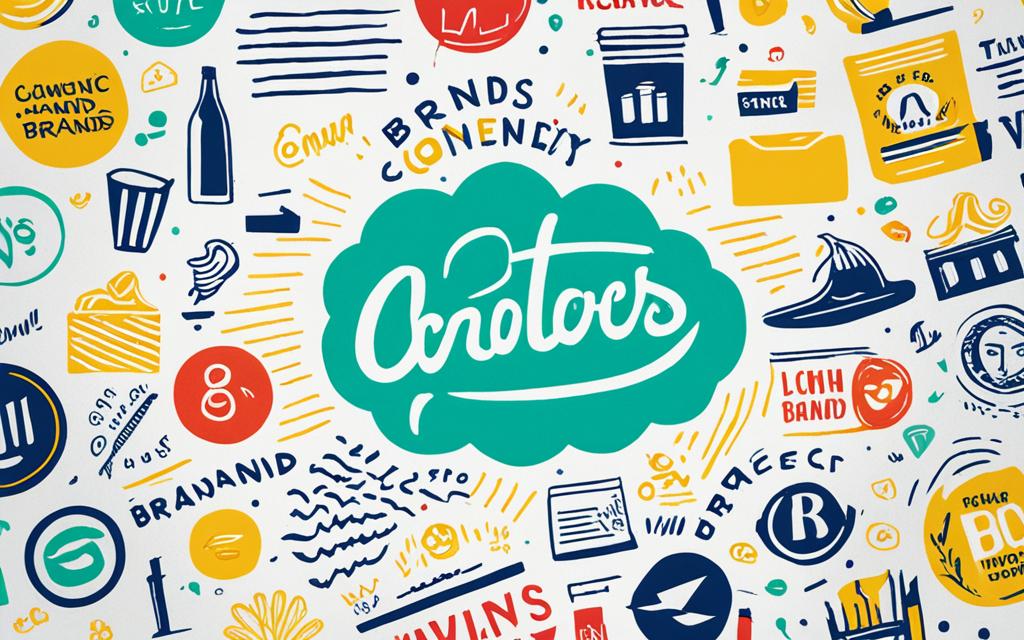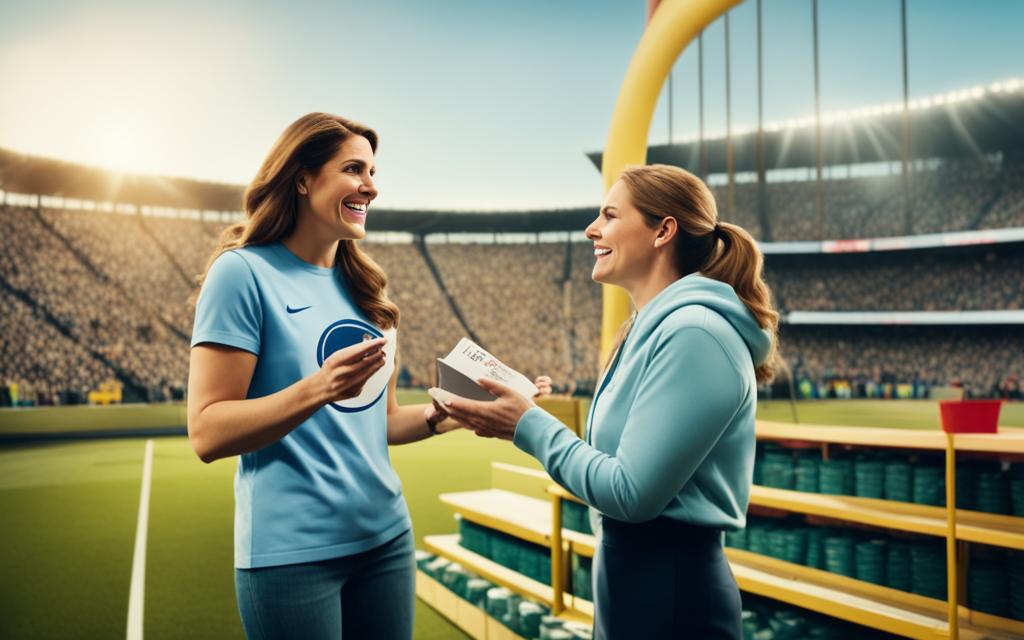In today’s crowded marketing landscape, standing out and connecting with your audience is more crucial than ever. One powerful way to do this is through the art of brand storytelling. By tapping into the emotional and relatable aspects of your brand, you can create a lasting impression and captivate your target consumers. In this article, we’ll explore some of the top Iconic Brand Stories that have inspired audiences and examine how you can apply these Lessons from Successful Brand Stories to elevate your own How to Apply These Examples to Your Brand.
The key to effective brand storytelling lies in your ability to forge a genuine connection with your audience. By highlighting your brand’s core values, unique personality, and the emotional experiences it can offer, you can differentiate yourself from the competition and leave a lasting impression. As you delve into the Iconic Brand Stories and Lessons from Successful Brand Stories outlined in this article, consider how you can translate these insights into a captivating narrative that resonates with your target market.
Iconic Brand Stories That Captivated Audiences
The most successful brands understand the power of storytelling. By crafting iconic brand stories that resonate with their audience, companies can forge deeper connections and leave a lasting impact. Let’s explore two renowned examples that have captivated consumers and solidified their brands’ reputations.
Coca-Cola’s “Share a Coke” Campaign
Coca-Cola’s “Share a Coke” campaign was a brilliant use of personalization and social engagement. By printing popular names on their iconic bottles and cans, the brand invited consumers to find and share their own Coca-Cola. This campaign tapped into the universal human desire for connection and belonging, encouraging customers to share their Coca-Cola with friends, family, and loved ones.
The campaign’s success can be attributed to its ability to make each individual consumer feel seen and valued. By personalizing the product, Coca-Cola transformed a simple beverage into a meaningful, shareable experience. This strategy not only boosted sales but also fostered a sense of community and loyalty among Coca-Cola’s customer base.
Dove’s “Real Beauty” Movement
Dove’s “Real Beauty” campaign was a groundbreaking shift in the beauty industry. Instead of featuring flawless, airbrushed models, Dove showcased diverse women of all shapes, sizes, and ages, celebrating their natural beauty. This bold move challenged societal norms and encouraged women to embrace their uniqueness.
The “Real Beauty” campaign resonated deeply with Dove’s target audience, as it addressed the widespread insecurities and unrealistic beauty standards that many women face. By shifting the narrative and empowering women to redefine beauty on their own terms, Dove’s brand story struck a chord and earned the company widespread praise and loyalty.
These iconic brand stories demonstrate the power of crafting a narrative that goes beyond the product, tapping into the emotions and experiences of the target audience. By creating campaigns that are authentic, relatable, and meaningful, companies can captivate their customers and leave a lasting impression.
“A brand is no longer what we tell the consumer it is – it is what consumers tell each other it is.” – Scott Cook, co-founder of Intuit
Lessons from Successful Brand Stories
Analyzing the success of iconic brand stories can provide valuable insights and lessons that you can apply to your own marketing strategy. Two key takeaways are the importance of authenticity and emotional connection, as well as the power of storytelling across multiple channels. By understanding these principles, you can create a more impactful and cohesive brand narrative that resonates with your target audience.
Authenticity and Emotional Connection
Successful brand stories often have one thing in common: they are authentic and create an emotional connection with the audience. Consumers today are increasingly savvy and can quickly detect inauthentic or disingenuous messaging. Brands that lead with genuine values, beliefs, and purpose tend to resonate more deeply with their audience. By crafting stories that tap into universal human emotions like joy, inspiration, or empathy, you can forge a stronger bond with your customers and build lasting brand loyalty.
Storytelling Across Multiple Channels
The most impactful brand stories don’t exist in a vacuum but rather come to life across a variety of touchpoints and platforms. From social media and video content to email campaigns and in-person experiences, successful brands leverage the power of Lessons from Successful Brand Stories to tell a cohesive and consistent narrative. By taking an omnichannel approach, you can ensure that your brand story is woven throughout the customer journey, creating a more immersive and memorable experience.
To apply these lessons from Future Trends in Brand Storytelling to your own marketing strategy, focus on crafting authentic, emotionally resonant stories and distributing them seamlessly across multiple channels. This holistic approach will help you build a stronger brand identity and deepen your connection with your target audience.
“The most powerful brands are built on stories, not just products.” – Sonia Simone, Chief Content Officer at Copyblogger
Top Brand Storytelling Examples to Inspire Your Marketing Strategy
Studying the success of iconic Iconic Brand Stories can provide valuable insights to elevate your own brand’s storytelling. By exploring these captivating examples, you can gain inspiration and strategies to engage your audience more effectively. Let’s dive into some of the top brand storytelling examples that have captivated audiences and consider how you can apply these principles to your How to Apply These Examples to Your Brand.
Coca-Cola’s “Share a Coke” Campaign
Coca-Cola’s “Share a Coke” campaign was a brilliant example of using personalization and emotional connection to drive engagement. By printing individual names on Coke bottles and cans, the brand fostered a sense of personal ownership and belonging, encouraging consumers to share their customized Coke with friends and family. This campaign tapped into the universal human desire for connection and belonging, creating a viral sensation that boosted sales and brand loyalty.
Dove’s “Real Beauty” Movement
Dove’s “Real Beauty” campaign challenged industry standards by celebrating diverse body types and redefining societal beauty norms. By featuring “real women” in their advertising, Dove struck a chord with audiences and fostered a sense of inclusivity and self-acceptance. This powerful storytelling not only resonated emotionally but also positioned Dove as a brand that champions authentic representation and self-esteem.
Patagonia’s “Don’t Buy This Jacket” Campaign
Patagonia’s unconventional “Don’t Buy This Jacket” campaign was a bold statement that prioritized environmental sustainability over profit. By encouraging consumers to reduce consumption and repair their existing products, Patagonia demonstrated its commitment to environmental stewardship and challenged the traditional consumerist mindset. This authentic and purpose-driven storytelling resonated with audiences and helped establish Patagonia as a leader in sustainable fashion.
| Brand | Campaign | Key Takeaways |
|---|---|---|
| Coca-Cola | “Share a Coke” | Personalization, Emotional connection, Driving engagement |
| Dove | “Real Beauty” | Challenging industry norms, Fostering inclusivity, Promoting self-esteem |
| Patagonia | “Don’t Buy This Jacket” | Environmental sustainability, Purpose-driven storytelling, Challenging consumerism |
These Iconic Brand Stories demonstrate the power of authentic, emotionally-driven storytelling to captivate audiences and drive meaningful engagement. By studying these successful campaigns, you can gain valuable insights to inform your own How to Apply These Examples to Your Brand and create a compelling narrative that resonates with your target audience.
How to Apply These Examples to Your Brand
As you’ve seen, some of the most successful brand storytelling campaigns have captivated audiences by tapping into their core values and emotions. To apply these lessons to your own brand, start by identifying your brand’s fundamental principles and beliefs. What values resonate with your target audience, and how can you authentically weave these into a compelling narrative?
Identifying Your Brand’s Core Values
Take a deep dive into your brand’s history, mission, and purpose. Uncover the unique qualities that set you apart and evoke a genuine emotional connection with your consumers. By aligning your brand’s core values with their aspirations and experiences, you can create a narrative that resonates on a deeper level.
Crafting a Compelling Narrative
With your brand’s foundation firmly established, it’s time to craft a narrative that captivates your audience. Leverage the principles of effective storytelling, such as relatable characters, vivid imagery, and a clear, cohesive message. Explore innovative ways to share your brand’s story across multiple touchpoints, from social media to experiential marketing, ensuring a consistent and immersive experience for your consumers.






